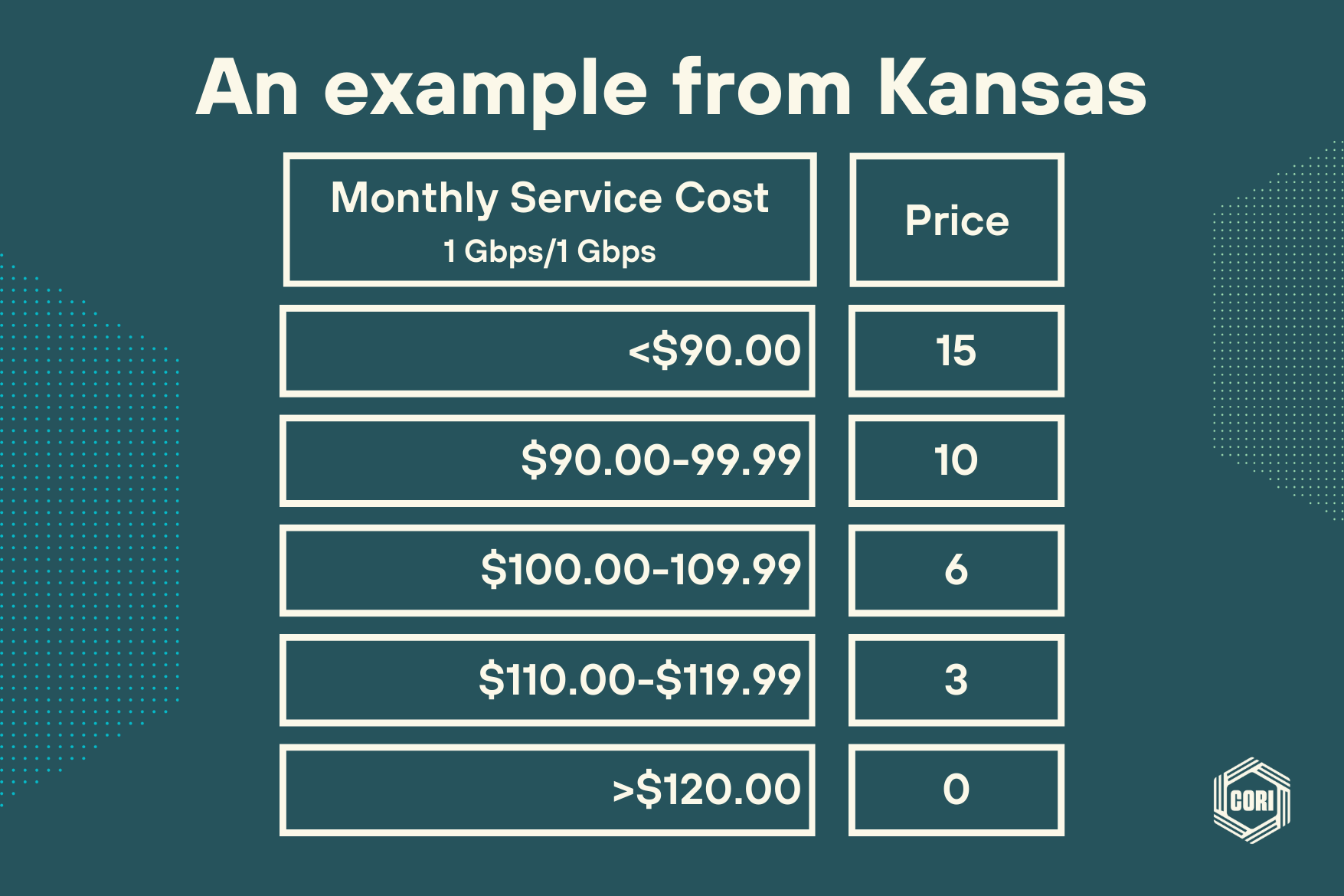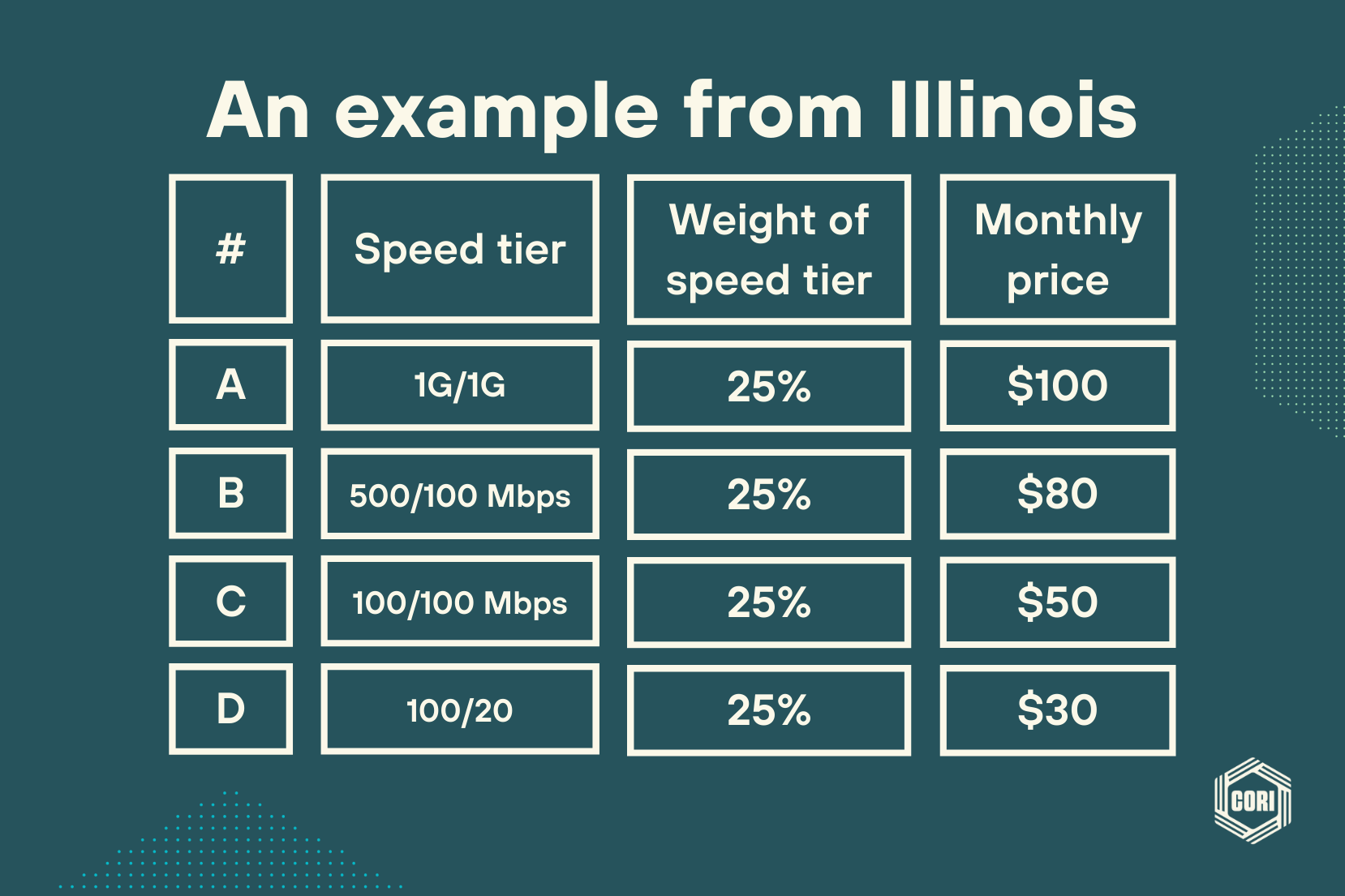BEAD Broadband Funding Guide: Affordability
Affordability is one of the three required primary criteria in BEAD applications, worth between 15-40% of the scoring in most states. Applicants will need to document both a middle-class affordability tier, and a low-cost affordability program.
Whether and how applicants meet affordability criteria is a critical input for the financial viability of deployments, especially in low-density, rural areas. As applicants evaluate whether to apply for BEAD program grants, they must understand their state affordability criteria and model how compliance will impact the economics of their deployments.
The middle class affordability requirement is measured by the price of symmetrical gigabit service for fiber deployments. Specifically, BEAD funding rules dictate that each state’s scoring rubric must require an applicant’s “commitment to provide the most affordable total price to the customer for 1 Gbps/1 Gbps service in the project area” for priority broadband projects. For “other last mile projects” such as fixed wireless deployments the rules requires applicants to provide a total price for service at speeds of 100/20 Mbps (or their highest speed tier).
There are many ways in which these parameters are reflected in state programs. Some states require providers to list a specific dollar amount they will charge per month for 1 Gbps symmetrical service, while others require the price to be comparable with what ISPs are charging in competitive markets (i.e., statewide or urban market averages).


Low-cost service plans are subscription tiers targeted at eligible, low-income households. All BEAD recipients must offer a low-cost plan as a condition of participating in the program, however, some states also include low-cost service plans in the scoring rubric as well.
Questions to ask before you start your application
Is your state allocating points based on low-cost options?
- If yes, a more robust low-cost plan will make your application more competitive.
- If not, applicants will still need low-cost options, but it will not impact scoring. Low-income and middle-class affordability are requirements. For states that are not allocating points based on low-cost options, applicants that do not offer such an option will be considered ineligible for a BEAD grant.
Does your state have rules about the length of time affordable prices must remain available?
- Some states award extra points if ISPs will not change the price of their 1 Gbps symmetrical service tier for five years or more.
- According to the program rules, low-cost options must be available for the life of the network.
- If it is a significant financial constraint to offer low-cost options, states may offer waivers or raise low-income service plan pricing. However, waivers will need to include detailed accompanying documentation to prove the impacts of lower service plans.
Which of the NTIA’s suggested requirements for low-cost service options are required in your state?
- The funding rules suggest that in addition to lower pricing, low-cost options must be inclusive of all fees, have a minimum latency cap, and must not include data caps, surcharge pricing, or throttling. Make sure this is included in any low-cost service plan narrative.
Can you score more points with other affordability-related programs?
- Some ideas include promising to reinvest revenues into affordability or covering installation fees, implementing a “connect your neighbor fund” that collects funding to pay for low-income installations via a small, optional surcharge on your bill, or even providing free WiFi service in institutions or public spaces.
Strategies for success in this category
If your state requires fixed prices, the only way to score maximum points in this section is by adhering to what the state has calculated as affordable.
- That said, some states will waive or raise low-income service plan pricing if the subgrantee can prove it is not financially sustainable in certain areas.
If your state allows for more flexibility, make that clear in your narrative/analysis. For example:
- Explain that the price of 1 Gbps symmetrical is within the target price ranges for income levels in the region/state. (In some states, this is defined as pricing that falls under 2 percent of household income.)
- Include how many years the 1 Gbps symmetrical price will be offered, ideally for five years or more.
Middle class affordability can be satisfied by providing “low-cost options” to all subscribers, not just “qualified” subscribers.
- If this is allowable in your state, you may consider this option if your business plan can be sustainable with a higher percentage of your subscribers signing up for the low-cost option.
Questions? Get in touch.
If you have any additional questions or would like help with your BEAD application, please contact us.